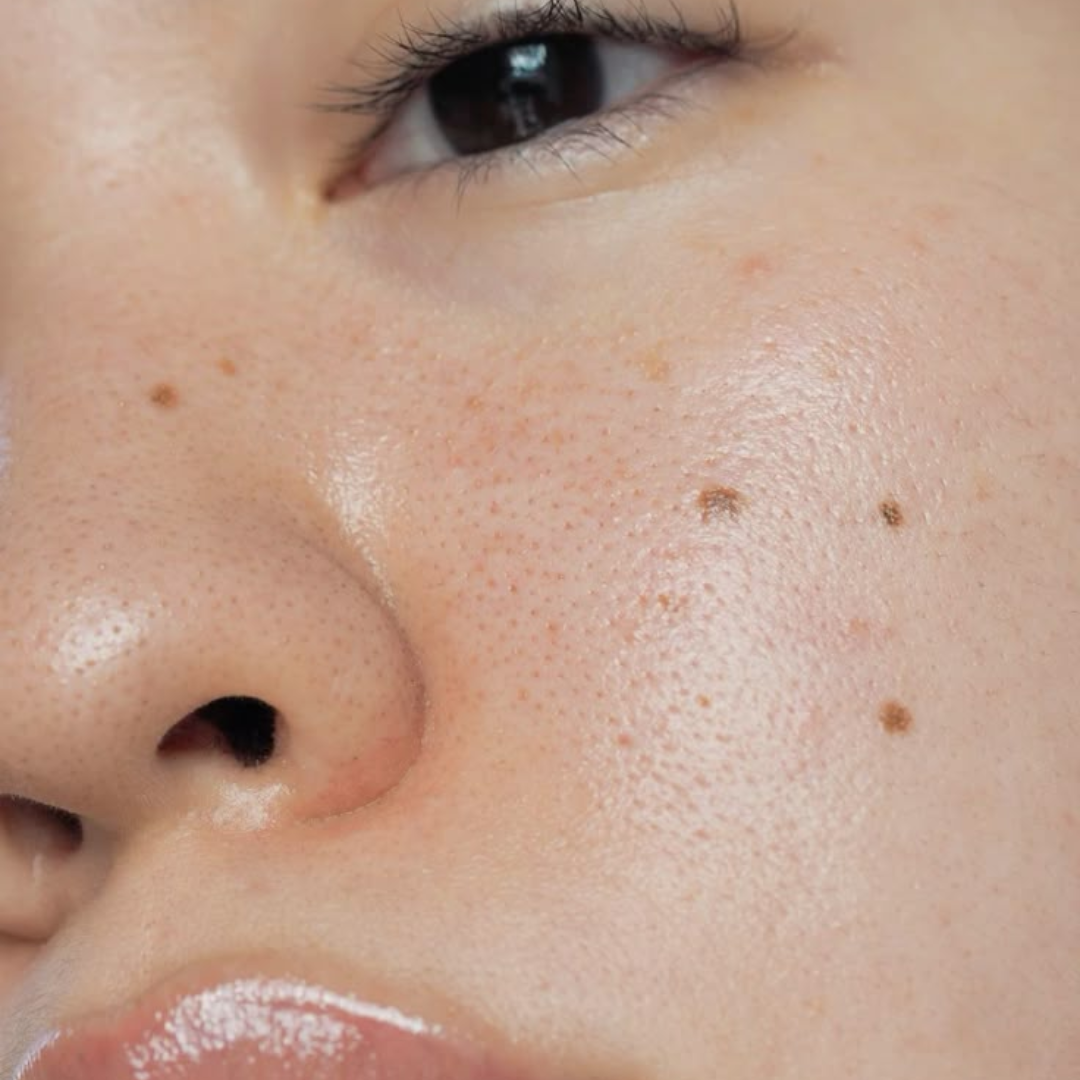
Why do we get more moles as we age?
Share
Moles, also known as nevi, are an integral part of our skin. They can appear from birth, during childhood, or later in adulthood. Many people wonder: why do we have more moles as we age? Is this a normal phenomenon, or a sign of something more serious? In this article, we'll explore the reasons for this increase, the risk factors, and the steps you can take to monitor the evolution of these skin blemishes.
What is a mole?
A mole is a small pigmented spot on the skin, usually benign. It is formed by an accumulation of melanocytes, the cells that produce melanin, the pigment that gives skin its color. These cells can sometimes group together to form a brown, black or even pink spot.
Moles are often hereditary, but they are also influenced by environmental factors such assun exposure. There are different types: congenital nevi (present from birth), acquired nevi (appearing later in life) and dysplastic nevi (atypical moles requiring monitoring).

Why do moles appear with age?
The answer is multifactorial. There are several reasons why we have more moles as we age:
1. Cumulative sun exposure
The main factor is repeated exposure to UV rays over the years. The skin remembers every sunburn and prolonged exposure. This accumulation can lead to the appearance of new moles. UVB rays stimulate melanocytes and encourage them to group together, leading to the formation of new nevi.
This explains why the areas most exposed to the sun - face, arms, back - are also those where moles are most common.
2. Hormonal changes
Hormonal changes also influence the appearance of moles. Puberty, pregnancy, menopause or certain hormonal treatments can trigger the formation of new nevi or modify those already present.
With age, the body goes through several hormonal phases that favor these transformations. So it's quite normal to see new moles from your thirties and forties onwards.
3. Natural skin aging
As we age, our skin undergoes natural changes. Cell renewal slows down, the skin becomes thinner, and certain repair mechanisms deteriorate. This can facilitate the appearance of pigmentary anomalies, including moles.
What's more, some spots may look like nevi but are actually lentigos or seborrheic keratoses, also linked to skin aging.

Is it dangerous to have more moles with age?
The appearance of moles is not in itself abnormal, nor is it necessarily cause for concern. However, regular monitoring is essential. The main risk is that of transformation into melanoma, a type of skin cancer.
Risk factors include :
-
More than 50 moles
-
Presence of atypical moles
-
Family history of melanoma
-
Fair, sun-sensitive skin
It is therefore advisable to have your skin examined regularly by a dermatologist, especially if you notice a change in the shape, color or size of a mole.
How can I keep an eye on my moles?
Self-monitoring is crucial. There's a simple method for detecting a suspicious mole: the ABCDE rule.
-
A for Asymmetry
-
B as in irregular edges
-
C as in non-uniform color
-
D for Diameter greater than 6 mm
-
E as in Evolution (change over time)
If a mole displays one or more of these signs, it is essential to consult a health professional.

Can the appearance of new moles be prevented?
Although it is impossible to completely prevent the appearance of moles with age, certain measures can limit their multiplication:
1. Effective sun protection
Use a high factor sunscreen (SPF 30 minimum) all year round, especially on exposed areas. Wear a hat, sunglasses and protective clothing to reduce the impact of UV rays.
2. Avoid UV cabins
Tanning beds accelerate skin aging and greatly increase the risk of melanoma. We strongly advise against their use.
3. Regular dermatological monitoring
An annual medical check-up can quickly identify nevi that need to be monitored or removed.
Difference between mole, lentigo and keratosis
With age, some brown spots can be mistaken for moles. It's important to know the difference:
-
Lentigo is a pigmented spot caused by the sun, often flat and uniform in color.
-
Seborrheic keratosis is a benign skin growth, often rough to the touch.
-
The mole is generally darker, may be raised, and has a more regular shape.
Only a dermatologist can make a precise diagnosis and provide reassurance about the nature of a lesion.
When should you worry?
Consult if :
-
A mole changes rapidly
-
It itches, bleeds or becomes painful
-
New grains suddenly appear in large numbers
-
You have a history of skin cancer
It's always best to err on the side of caution, even if most moles are benign.
Conclusion
Having more moles with age is a common phenomenon, generally not serious. It is mainly the result of cumulative sun exposure, hormonal changes and skin aging. However, extra vigilance is called for, as some lesions can develop into melanoma.
Prevention requires rigorous sun protection, regular dermatological monitoring and a good knowledge of the warning signs. When in doubt, never delay in seeking medical advice.
